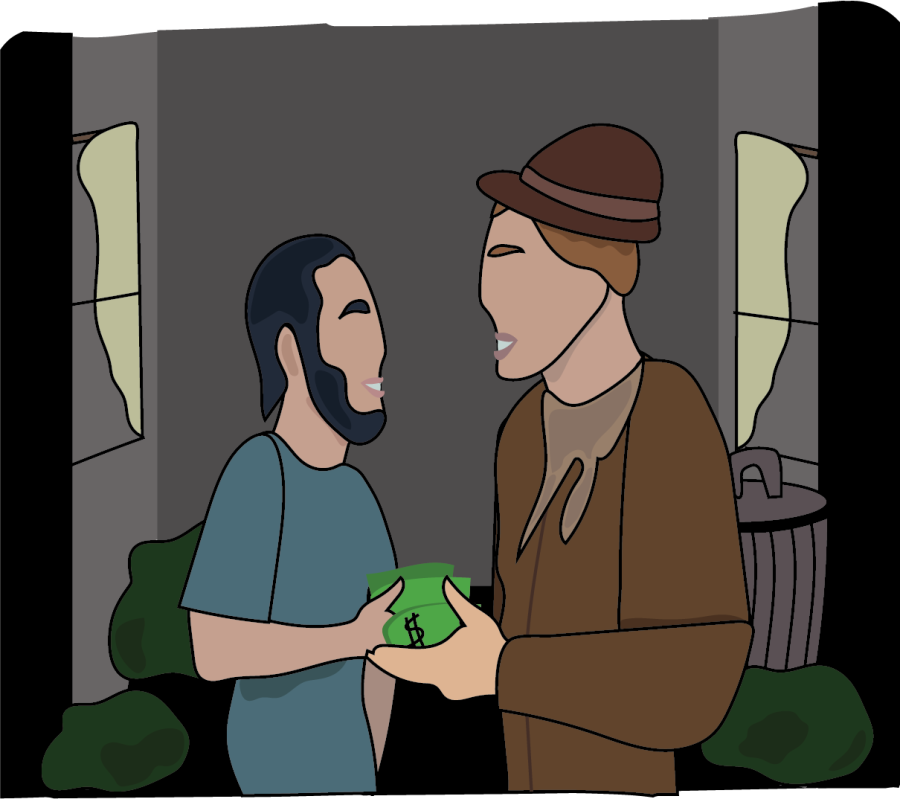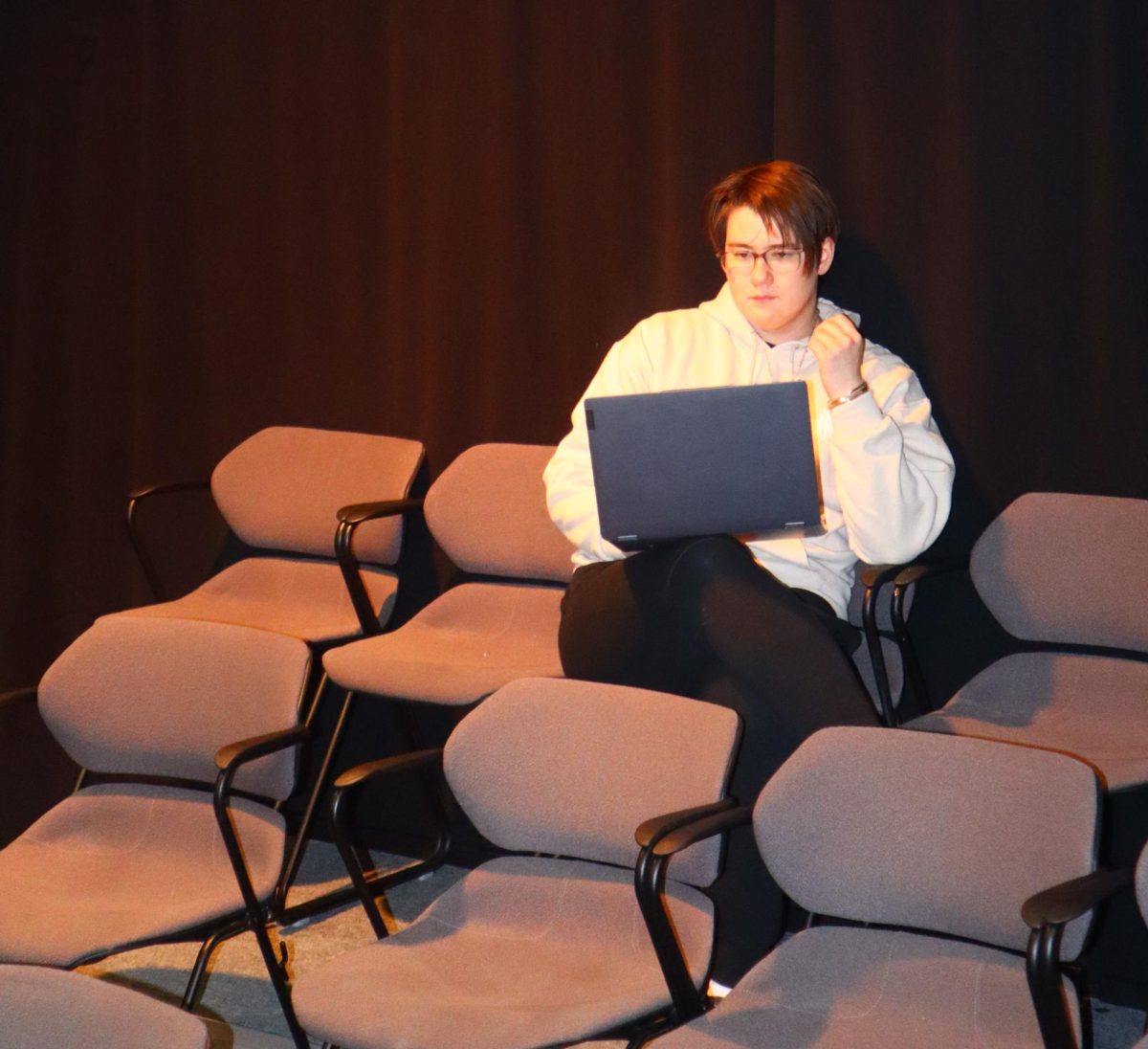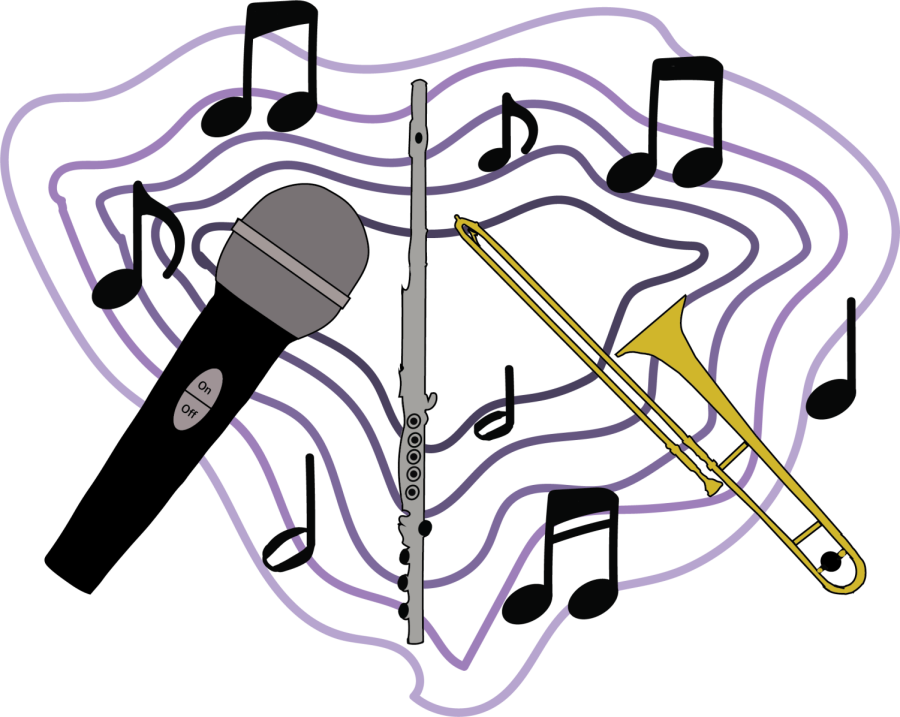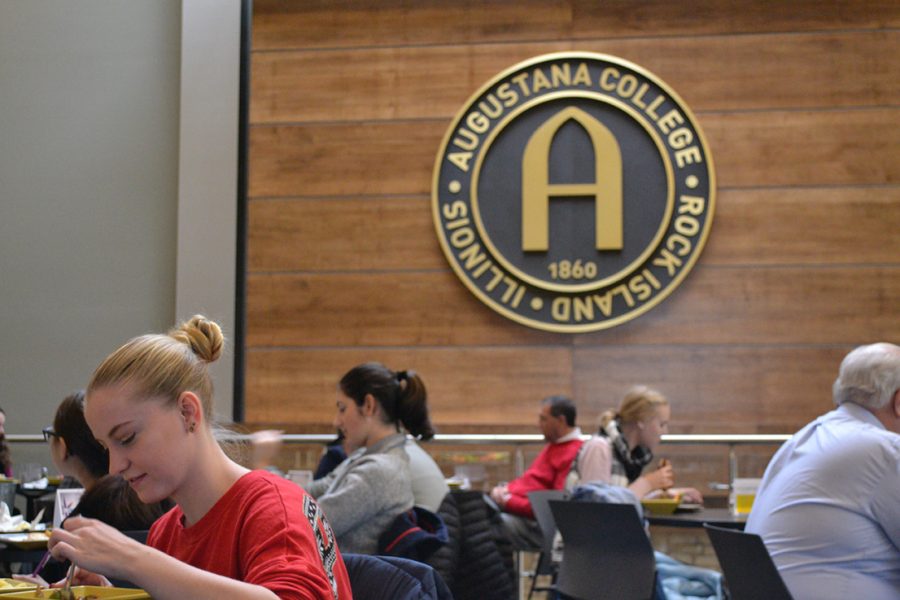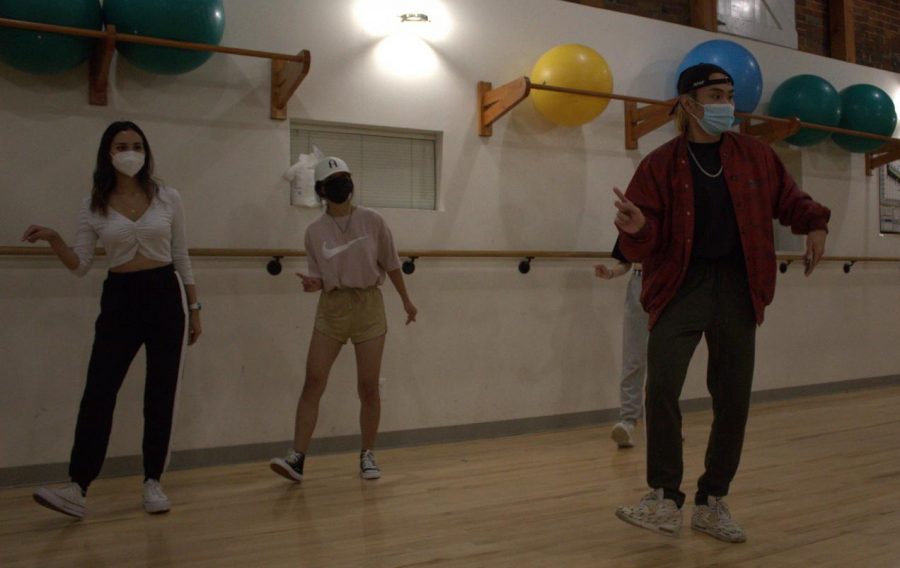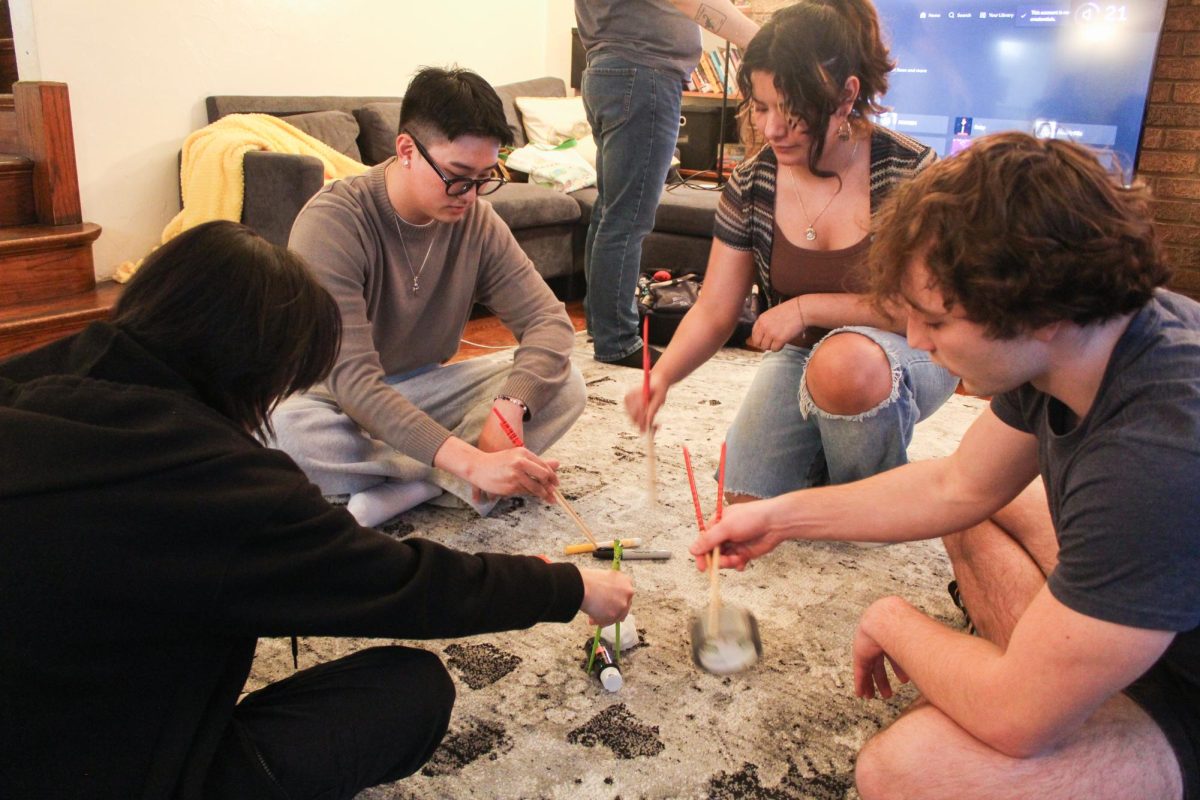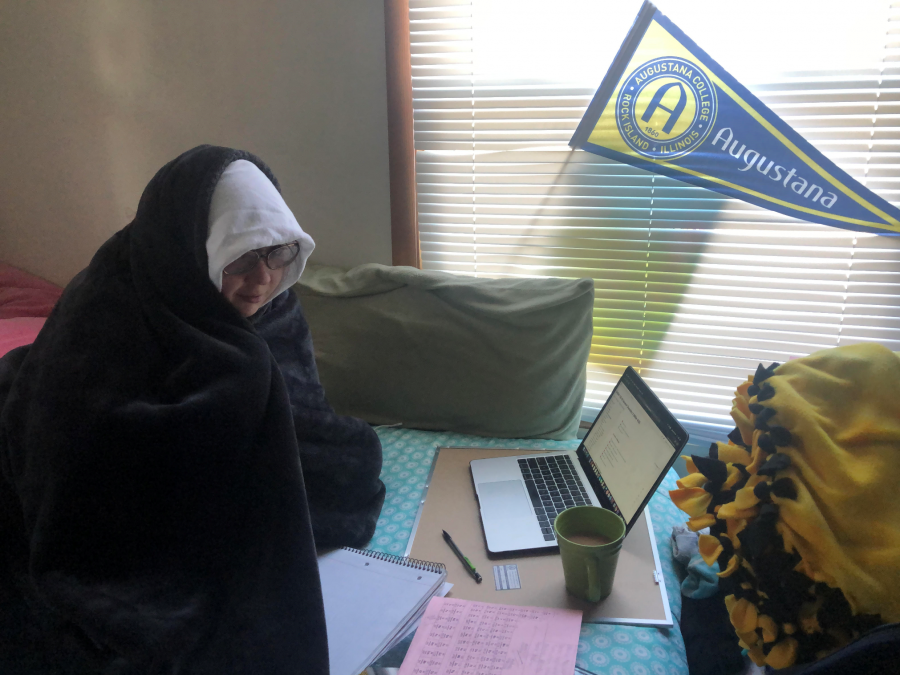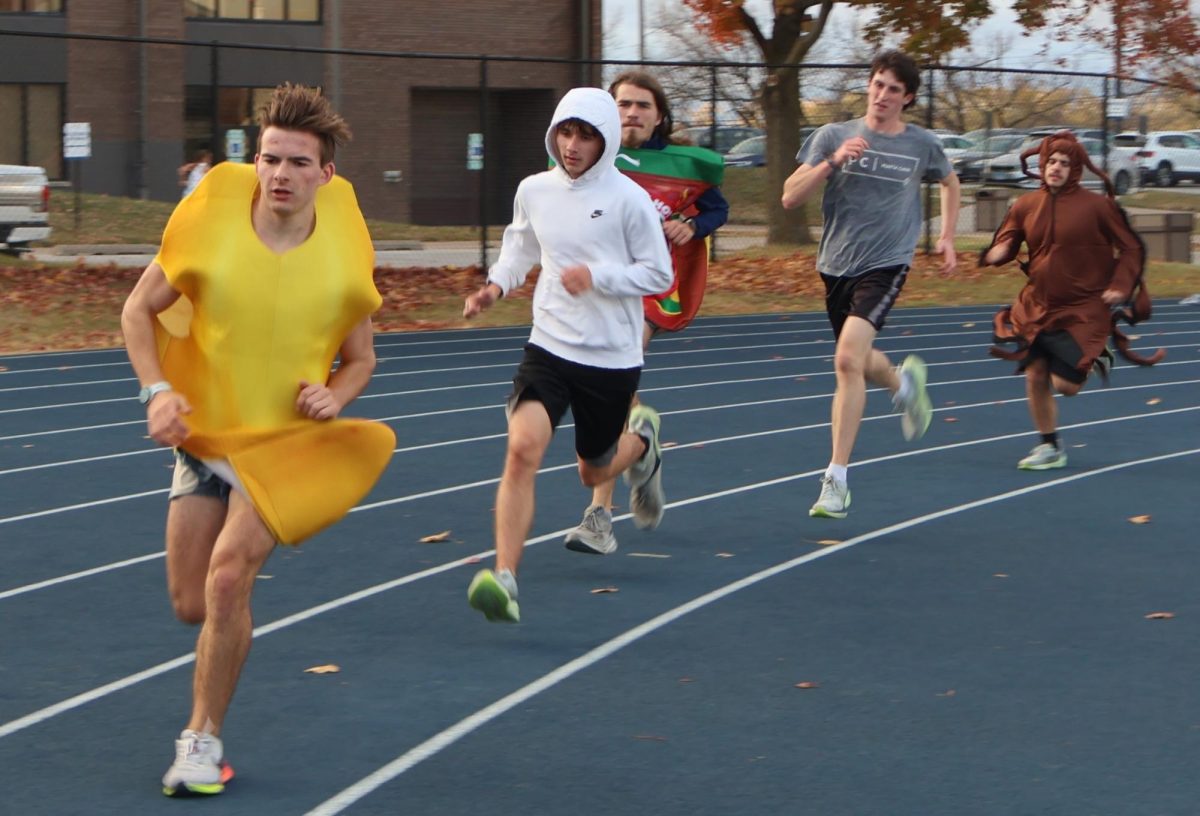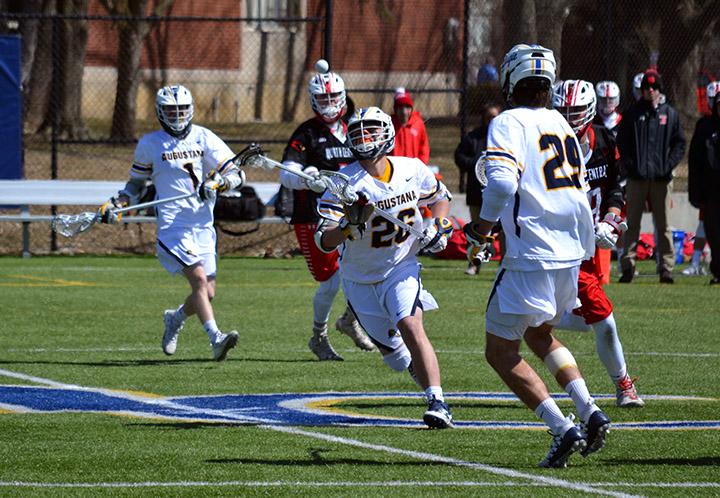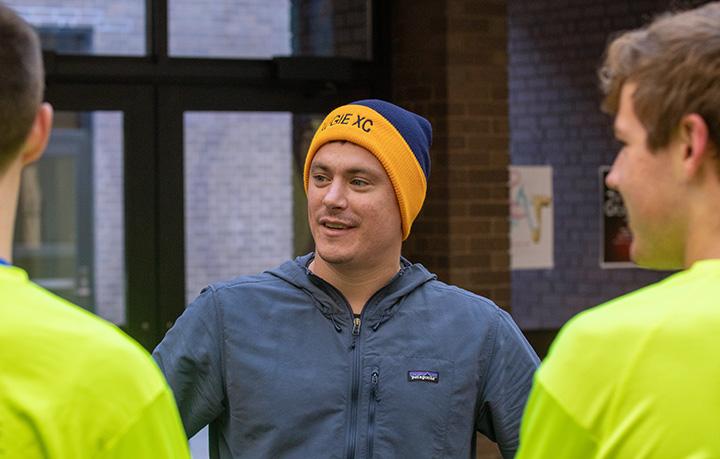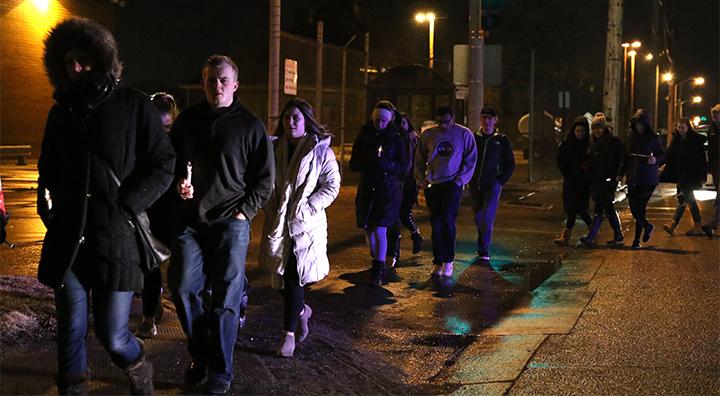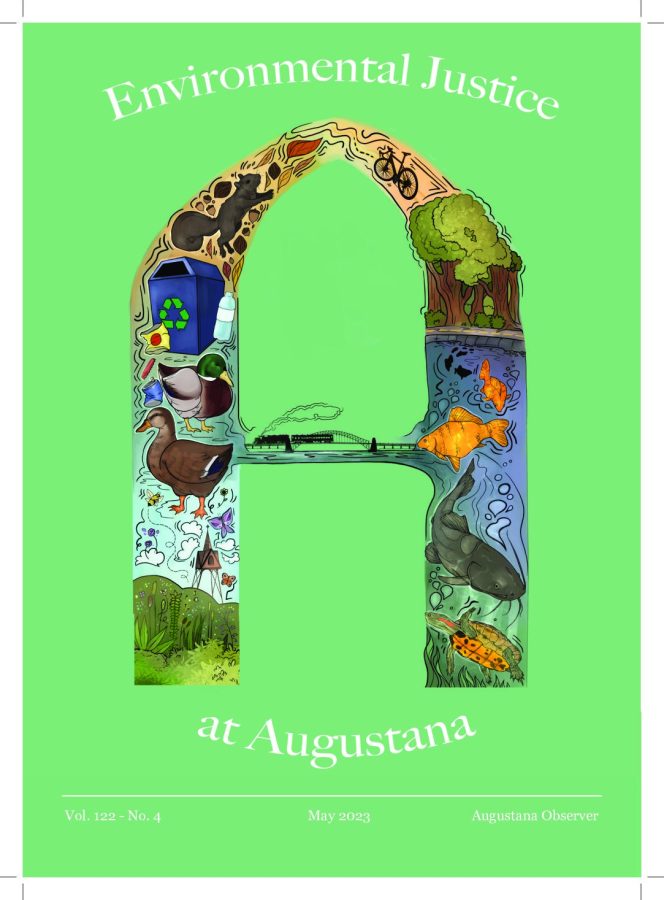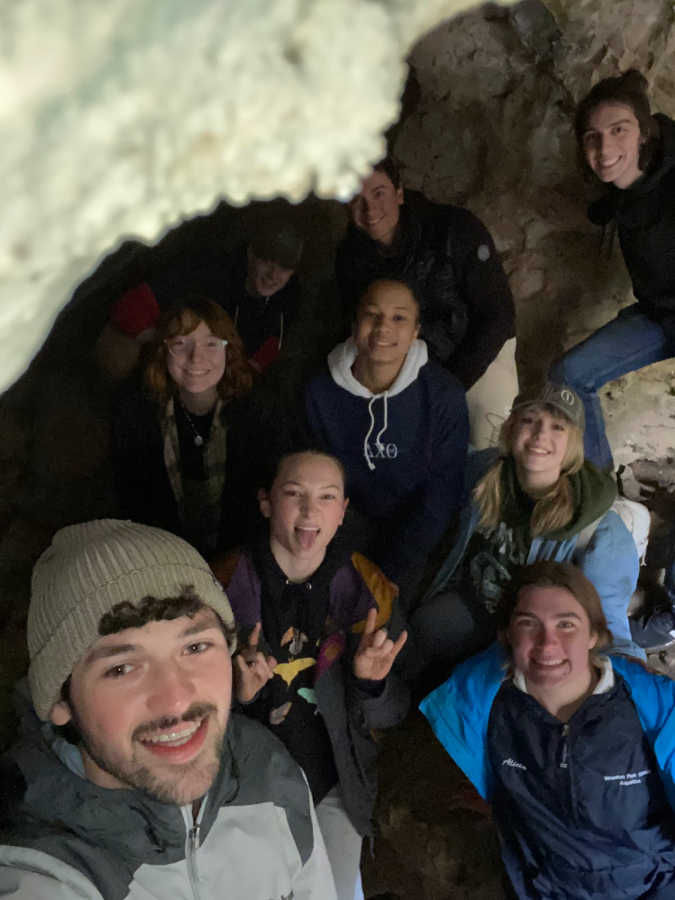Over 70 graduates of Augustana’s geography program visited campus this weekend for the department’s 75th anniversary.
On Friday, April 26, alumni took part in a field trip across the Quad Cities visiting different geographic locations, such as Sylvan Island where former geography students helped transform the park in the 1970s. The following day on Saturday, April 27, alumni were invited to the John Deere Planetarium to listen to speeches by Norm Moline, Augustana’s emeritus professor of geography, in addition to other alumni and current professors.
“We’ve been excited for and thinking about this for over a year,” Professor of Geography, Chris Strunk, said. “It’s an opportunity for alumni to meet students but also to meet people from other classes.”
The event showcased some of the history of Augustana’s geography department, the achievements of graduates and changes that the department has faced. In the 1970s, the environmental studies program was created, while just a few years ago, for example, the geographic information systems (GIS) minor was created. Now, both have more students than the geography program itself, though there is much overlap.
Saturday’s event began with a talk about the program’s history by Norm Moline ’64, who taught many of the alumni in the room.
“We can’t forget that CW Sorensen, the president of Augustana for 13 years and first non-ordained minister as president, was a distinguished geographer,” Moline said. “He wrote for the New York Times… was a CBS correspondent … and was elected into the Royal Geographical Society of London.”
Moline said Augustana’s geography program received much support over the years because of Sorensen. Moline also said that field trips and fieldwork are important for geographers.
“[Trips] are a big part of what we do,” Strunk said. “We like to go out and see things, then talk about those interactions.”
Strunk said that geography is about the relationship between people and the environment. Moline’s talk was followed by five different alumni who spoke about various topics, from saving the chestnut tree from extinction, to intersection design and international migration.
“Big problems, like urbanization and climate change, are about people and the environment—how people are changing the environment and how we can address that,” Strunk said.
Tracy Leoni ’82 majored in geography, accounting and business at Augustana. She attended the event and said she was surprised by the experience.
“I thought [the speeches] were an awesome sampling of diversity within the field of study of geography,” Leoni said. “I was a little nervous about who I’d know, but I’ve made so many new friends.”
Gary Haut ’74 was also at the event. He majored in geography and business administration and taught high school Earth science for 40 years.
“I’ve enjoyed seeing people from different classes,” Haut said. “Some I haven’t seen in 50 years.”
Like Leoni, Haut said he appreciated the depth of work and interests that alumni presented, from biology, to teaching, to technical programs and drones.
He also said that Augustana was unique as a small school where faculty teach all classes.
“When I graduated, I went for a master’s degree at Arizona State and I almost felt sorry for the students there,” Haut said. “Sometimes the professor would lecture and sometimes doctoral students would lecture.”
Later in the day, Jenny Arkle, professor of geography, geology, environmental studies and the program director of GIS, gave a speech joined by Reuben Heine, professor of geography. Arkle, Heine and Strunk made it clear that each of them appreciated their students.
Arkle spoke about the lead service line project, which involved many students in the process of identifying the material of pipes beneath Rock Island. Heine spoke about their trips to Louisiana in an effort to understand the threats that face the river delta, in addition to drones and how they can aid the college.
“We’re really happy that we have such a long tradition here at Augustana,” Strunk said. “It’s pretty unique for a liberal arts college to have a geography department, especially one that’s been around for such a long time.”










